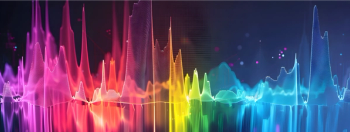
Characterizing Infrared Free Electron Laser Output Profile with Sum Frequency Generation Spectroscopy
Researchers have developed a sum frequency generation spectroscopy setup to characterize the output profile of an infrared free electron laser, providing valuable insight into the development of more efficient and accurate lasers.
Xiamen University researchers have developed a sum frequency generation spectroscopy setup to characterize the output profile of an infrared free electron laser. The study, published online on April 21, 2023, in Spectroscopy Letters, was led by Zhaohui Wang (1).
Infrared free electron lasers are valuable tools in tracing reaction and vibrational energy transfer dynamics. Accurately characterizing their wavelength and micropulse profile is crucial for debugging and optimization purposes. Infrared free electron lasers are powerful laser sources that produce intense infrared light. Unlike traditional lasers that use solid-state or gas media, they generate light by passing an electron beam through an undulator. This process creates a powerful, tunable, and broadband infrared light source that can be used for a wide range of applications.
The researchers used a tabletop femtosecond laser to synchronize with the infrared free electron laser with high precision. This allowed them to develop an infrared free electron laser-sum frequency generation setup to measure the wavelength and micropulse duration of the laser output.
Through sum frequency generation cross-correlation, the team measured the delaytime-dependent infrared free electron laser-sum frequency generation spectra of a ZnS window. They found that the measured infrared free electron laser wavelength was linearly correlated with theoretical calculations based on a fixed electron beam energy and variable undulator magnetic gaps.
The micropulse duration was measured as 2.0 ps @ 5.25 µm and 2.9 ps @ 8.35 µm. These results demonstrate the excellent ability of sum frequency generation in diagnosing and characterizing infrared free electron laser output profiles, and the quality of the infrared free electron laser pulse structure.
Overall, the study offers valuable insight into the development of more efficient and accurate infrared free electron lasers. The sum frequency generation spectroscopy setup developed by the researchers has the potential to be widely used for diagnostic and optimization purposes in infrared free electron laser research.
Reference
(1) Guo, W.; Song, Q.; Xue, J.; Huangfu, Z.; He, Y.; Zhang, Y.; Liu, X.; Bao, J.; Wang, Z. Characterization of infrared free electron laser output profile through sum frequency generation spectroscopy. Spectrosc. Lett. 2023. DOI:
Newsletter
Get essential updates on the latest spectroscopy technologies, regulatory standards, and best practices—subscribe today to Spectroscopy.





